Australian Tropical Rainforest Plants - Online edition
Endiandra montana C.T.White

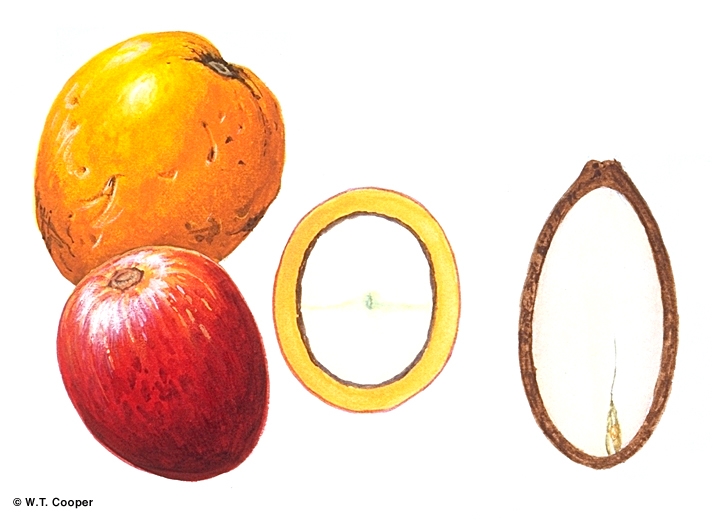


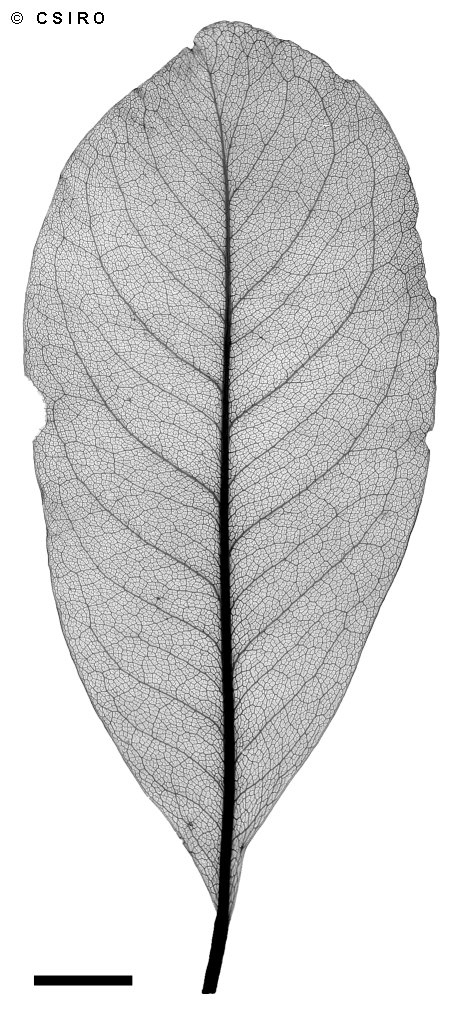
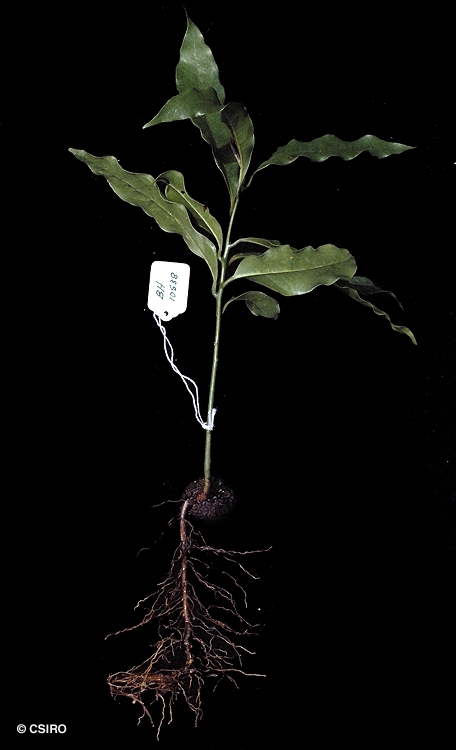

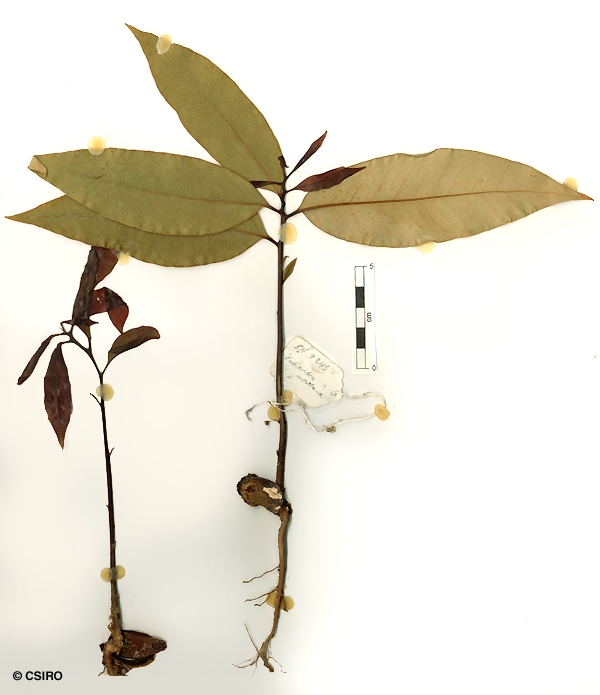
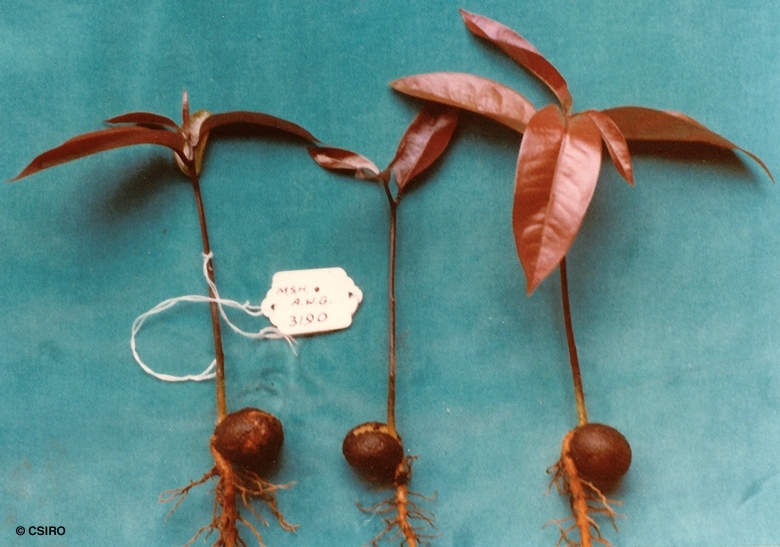
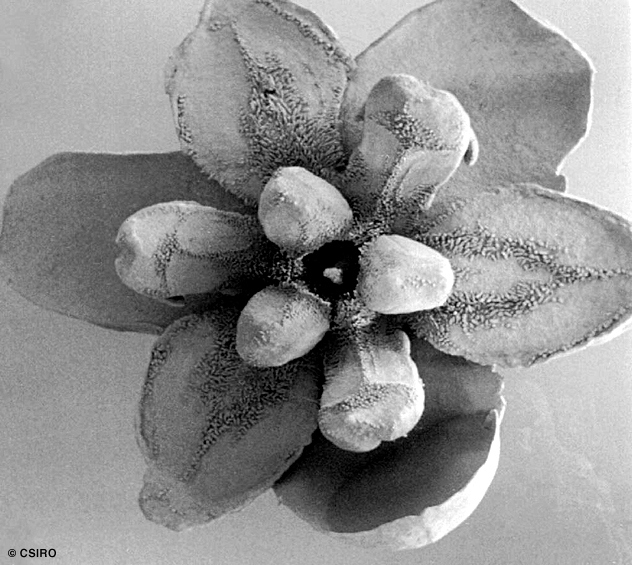
White, C.T. (1933) Contributions from the Arnold Arboretum of Harvard University 4: 36. Type: Mt. Alexander, alt. 1300 m., common in poor scrub on top of the mountain, no. 1497 (flowering and fruiting specimens), Dec. 18?.
Walnut, Coach; Coach Walnut; Walnut, Montana; Brown Walnut; Walnut, Brown; Montana Walnut
A thin pale brown layer normally visible under the subrhytidome layer before the first section of the outer blaze.
Twigs slightly fluted, angular or terete, glabrescent, clothed in straight, pale brown, appressed hairs when very young. Leaf blades about 7-13.5 x 3-6.2 cm, rather thick and leathery, green and glabrous on the underside. Midrib +/- translucent, flush with the upper surface. Petioles flat or channelled on the upper surface. Oil dots visible with a lens.
Fruits globular, pyriform or ellipsoid, about 30-52 x 20-41 mm. Seed about 21-39 x 15-34 mm. Cotyledons cream or pink.
First pair of leaves elliptic or lanceolate, about 120-160 x 44-50 mm, green on the underside. At the tenth leaf stage: leaves glabrous; oil dots numerous, visible only with a lens. Seed germination time 36 to 97 days.
Occurs in NEQ, widespread in the area. Altitudinal range from sea level to 1300 m. Grows in well developed rain forest on a variety of sites. Also occurs in New Guinea.





